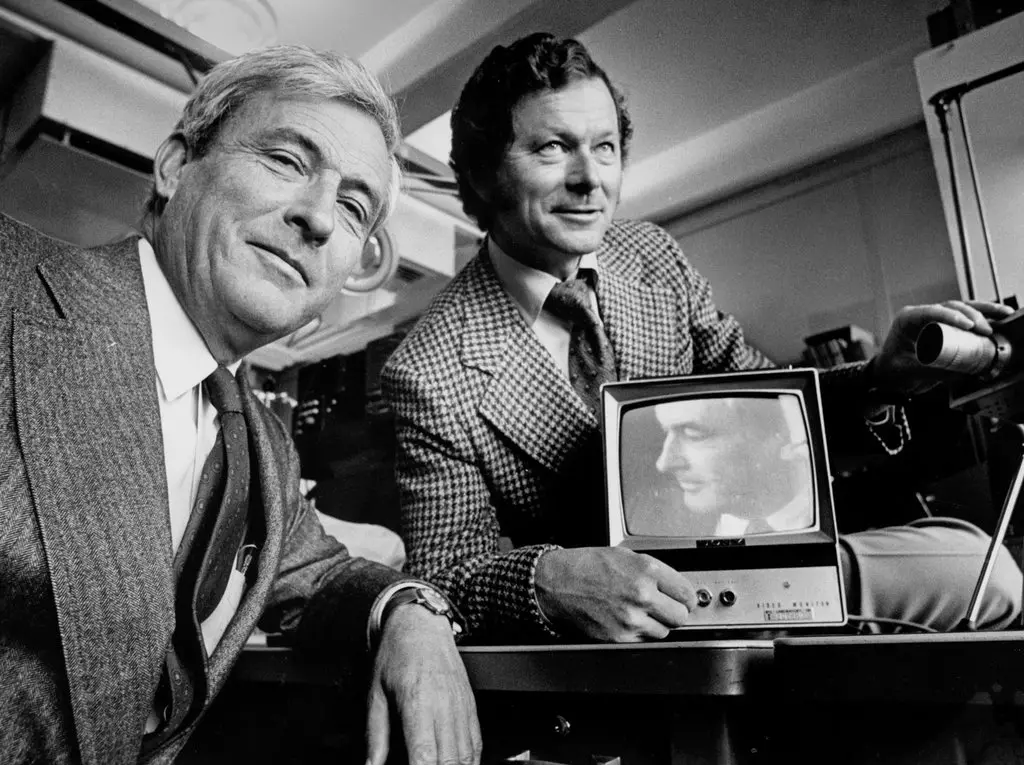In the 1960s, two brilliant scientists, Willard Boyle and George Smith, made a discovery that would change the world: they invented the charge-coupled device (CCD). This technology revolutionized imaging and paved the way for fiber-optic communications, digital cameras, laser-based storage, and many other innovations. Their work also contributed to the development of the semiconductor laser, which has played a huge role in making modern communications and electronics possible.
In 2009, Boyle and Smith were awarded the Nobel Prize in Physics for their invention of the CCD, which has had a lasting impact on technology and society.
The Birth of the Charge-Coupled Device (CCD)
In the early 1960s, Boyle and Smith were working at Bell Labs, a research institution known for its innovations in technology. Their goal was to create a better way to capture and store images electronically, replacing traditional methods like film photography and vacuum tube-based devices.
At the time, electronic imaging was limited, and they saw an opportunity to improve the way images were recorded. They invented the charge-coupled device (CCD), a semiconductor-based technology that could convert light into electrical signals. This was a huge leap forward, as it allowed images to be captured and processed digitally rather than relying on film or bulky electronics.
The CCD works by using a grid of light-sensitive capacitors to capture light at each point of an image. The captured light is then converted into electrical charges that can be read out and turned into a digital image.
How the CCD Changed Imaging
Boyle and Smith’s CCD technology quickly became essential in many areas. Here’s how it made a huge impact:
- Digital Photography: The CCD made digital cameras possible. Before this, photography relied on film, which was costly and less flexible. With CCDs, digital cameras could capture high-quality images that could be stored and processed easily.
- Medical Imaging: CCDs allowed for digital X-rays and endoscopes, which are used to view the inside of the body. This greatly improved medical diagnostics, making procedures faster, less invasive, and more accurate.
- Space and Astronomy: CCDs are used in space telescopes and satellites, allowing us to capture high-resolution images of planets, stars, and galaxies.
- Consumer Electronics: Beyond cameras, CCDs found their way into barcode scanners, camcorders, scanners, and more, making digital imaging a part of everyday life.
The Semiconductor Laser: A Key Extension
In addition to developing the CCD, Boyle and Smith’s work with semiconductor materials also contributed to the development of semiconductor lasers.
Before their work, lasers were large, expensive, and difficult to use. However, Boyle and Smith helped create smaller, more efficient lasers that used semiconductor materials like gallium arsenide. These lasers were much more affordable and versatile, which led to their use in technologies like fiber-optic communications, laser printers, and CD/DVD players.
The semiconductor laser also became a key component in fiber-optic networks, allowing for faster internet and telecommunications by transmitting light signals through fiber-optic cables. This technology is at the heart of the modern internet, making high-speed data transfer possible across long distances.
Why Their Work Matters
Boyle and Smith’s invention of the CCD and their contributions to semiconductor lasers transformed many industries, including:
- Telecommunications: Fiber-optic communication systems rely on semiconductor lasers to transmit data at the speed of light.
- Medical Field: The ability to take digital X-rays, use lasers for surgery, and even perform remote diagnostics became possible thanks to their work.
- Consumer Electronics: Everything from digital cameras to barcode scanners is powered by their inventions.
Their work not only improved existing technologies but also created entirely new industries. They helped shape the digital age, where everything from photos and videos to entire communication networks now relies on digital, light-based technology.
Recognition: The Nobel Prize
In 2009, Boyle and Smith were awarded the Nobel Prize in Physics for their work on the charge-coupled device (CCD). The Nobel Committee recognized that their invention had transformed the world of electronics and imaging and made an immense contribution to science and technology.
Despite their revolutionary impact, both Boyle and Smith remained humble, with Boyle famously saying that he was “just lucky” to have made the discovery. Nevertheless, their work has had a lasting influence on the technology we use every day.
Conclusion: A Legacy of Innovation
The invention of the charge-coupled device (CCD) and the development of the semiconductor laser by Willard Boyle and George Smith have had a profound effect on the world. Their work has changed how we capture and store images, communicate, and transfer data.
Their contributions laid the foundation for the digital revolution and continue to influence innovations in fiber-optic communication, medical imaging, and consumer electronics. Boyle and Smith’s work shows how scientific curiosity and collaboration can lead to breakthroughs that change the way we live and interact with the world.
Their legacy lives on in the devices we use every day—from smartphones to medical technologies—and in the global internet that connects us all.











